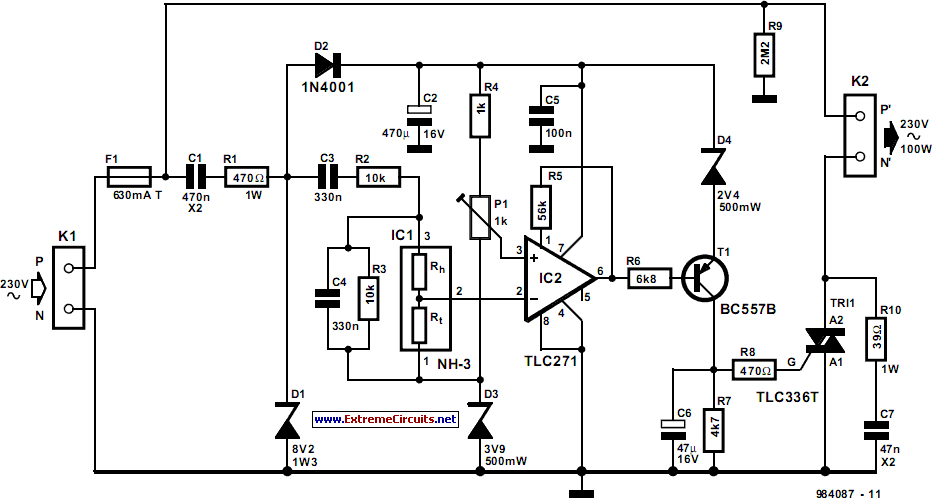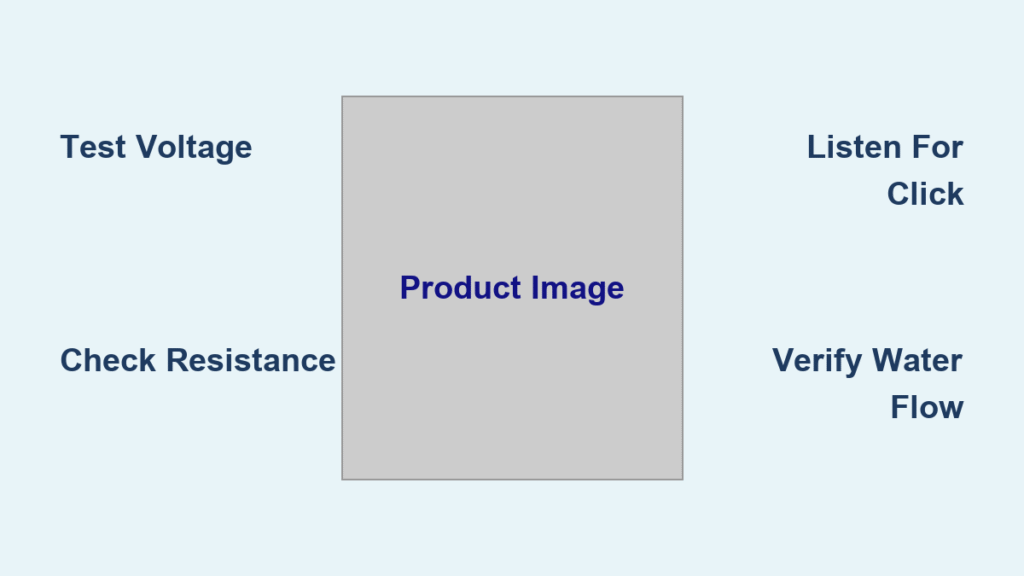Your humidifier has stopped adding moisture to the air, leaving your home uncomfortably dry while your furnace runs. Before paying $150+ for an HVAC technician, you can diagnose the problem yourself in 15 minutes with basic tools. The humidifier solenoid—a small electromagnetic valve controlling water flow—is the most common failure point in whole-house humidifiers. This guide shows you exactly how to test a humidifier solenoid to confirm if it’s dead or if your problem lies elsewhere in the control circuit.
When your humidifier solenoid fails, your entire system goes offline. You might notice zero water dripping from the drain line during operation or hear no distinct “click” when the humidistat calls for moisture. Since these solenoids operate on low-voltage 24VAC power and fail frequently due to mineral buildup or coil burnout, testing them is far simpler than most homeowners realize. Follow these proven steps to avoid unnecessary service calls and get your humidity levels back to normal.
Identify Your Exact Solenoid Failure Symptoms
Recognize Critical Warning Signs
Your humidifier solenoid has likely failed if you observe zero water flow from the drain line while the furnace runs, even with correct humidistat settings. Another dead giveaway is the absence of an audible click when adjusting the humidistat to maximum (50-60% humidity). Some solenoids fail in the open position instead, causing continuous water flow that risks water damage—immediately shut off the water supply if you see this. Dry air despite furnace operation confirms the system isn’t adding moisture, but don’t assume the solenoid is at fault yet.
Conduct a 60-Second Visual Inspection
Before grabbing tools, examine the solenoid valve body for water stains or mineral deposits indicating leaks. Check wire connections for corrosion or loose terminals—a frequent cause of intermittent operation. If you spot cracks in the plastic housing or discoloration on the coil, the solenoid has likely overheated and needs replacement. This quick visual check often eliminates the need for electrical testing when obvious physical damage exists.
Gather These Exact Testing Tools
Essential Equipment Checklist:
– Digital multimeter (must measure AC voltage up to 30V and resistance)
– Alligator clip leads (simplifies hands-free testing)
– Small flathead screwdriver (for wire connections)
– Safety gloves and eye protection (non-negotiable for electrical work)
Critical Pro Tip: Label wires with masking tape before disconnecting—note “HUM” for humidistat wires and “TR” for transformer connections. This prevents miswiring during reassembly, which causes 30% of DIY repair failures according to HVAC technicians.
Execute These Non-Negotiable Safety Steps
Power Shutdown Protocol:
1. Turn off the furnace breaker at your electrical panel—never rely on the thermostat alone
2. Wait 5 minutes for capacitors to fully discharge
3. Verify zero voltage at solenoid terminals using your multimeter
4. Place absorbent towels under the work area to catch drips
Critical Warning: Never test with 120VAC power. Humidifier solenoids operate exclusively on 24VAC. Applying higher voltage—even briefly—will instantly burn out the coil, turning a simple repair into an expensive replacement.
Test Operating Voltage at Solenoid Terminals

Live Circuit Voltage Procedure
- Restore furnace power at the breaker
- Set humidistat to 55% humidity (ensures active call for moisture)
- Locate terminals on solenoid (two small screw connections)
- Measure voltage with multimeter in AC mode:
– Touch red probe to one terminal, black to the other
– Good reading: 24VAC within 2-3 minutes of humidistat activation
– No voltage = control circuit failure
Interpret Your Results:
– 24VAC present? → Solenoid has power but isn’t working—coil likely failed
– No voltage? → Problem upstream (humidistat, safety switches, or wiring)
– Fluctuating reading? → Loose connection in control circuit
Measure Solenoid Coil Resistance Accurately

Power-Off Continuity Testing
- Disconnect both wires from solenoid terminals
- Set multimeter to resistance (ohms) mode
- Touch probes to terminals:
– Working coil: 20-100 ohms (exact value varies by brand)
– Open circuit: OL or infinite resistance (burned coil)
– Short circuit: Near zero ohms (internal failure)
Model-Specific Reference Guide:
– Aprilaire solenoids: Typically 40-60 ohms
– White-Rodgers units: Usually 25-45 ohms
– Honeywell models: Often 30-50 ohms
If your reading falls outside these ranges, the coil has failed and requires replacement.
Perform the Manual Activation Test
Direct Power Application (Use Caution)
Only attempt if voltage/resistance tests pass:
1. Isolate solenoid from humidifier circuit
2. Connect to 24VAC source using furnace transformer wires
3. Listen for distinct click and feel for valve vibration
4. Verify water flow (place bucket under drain line)
Critical Safety Note: Limit test to 10 seconds. Extended activation overheats the coil—some solenoids have duty cycle limitations as short as 30 seconds on/5 minutes off. If you hear the click but see no water, the valve is mechanically stuck from mineral deposits.
Diagnose Upstream Control Circuit Problems

Humidistat Continuity Testing
- Power off furnace completely
- Disconnect humidistat wires from control circuit
- Set humidistat to maximum humidity
- Test resistance across terminals:
– Working: Near 0 ohms (audible “click” when adjusting)
– Failed: Infinite resistance (no contact closure)
Quick Verification: Slowly turn the humidistat dial—you should hear a distinct mechanical click as it activates. No click means internal contacts are worn out.
Safety Switch Verification
Test these critical components with your multimeter in continuity mode:
– Airflow switch: Must close when blower operates (0 ohms)
– High water sensor: Should read 0 ohms when dry
– High temperature cutoff: Must show continuity below trip temperature
Any open circuit here interrupts power to the solenoid—clean contacts or replace faulty switches.
Troubleshoot Water Supply Blockages
Flow Restriction Diagnosis
- Inspect saddle valve (on copper water line):
– Turn clockwise 1/4 turn, then counterclockwise 1/2 turn
– Check for calcium deposits clogging the needle point - Remove water line from solenoid input
- Test flow by briefly opening saddle valve:
– Strong flow = supply OK
– Dribble = blockage upstream
Professional Insight: Saddle valves fail in 70% of clogged systems within 3 years. Replace with a full-port ball valve during your next service—it prevents 80% of future water flow issues.
Interpret Your Test Results Correctly
Definitive Replacement Indicators
Replace solenoid immediately if:
– Resistance test shows infinite or zero ohms
– Manual test produces no click/vibration
– Visible coil burnout (brown discoloration) or water damage
Repair control circuit if:
– No 24VAC reaches solenoid terminals
– Humidistat shows infinite resistance when activated
– Safety switches read open circuit during normal operation
Smart Parts Shopping Strategy
Before buying a replacement:
– Note exact model (Aprilaire 600, Honeywell HE360, etc.)
– Count terminal connections (2-wire vs 3-wire)
– Measure mounting bracket spacing
OEM parts cost 40-60% more but include correct adapters—avoid universal solenoids that require wiring modifications.
Prevent Repeat Failures with These Upgrades
Critical Maintenance Routine
- Monthly: Check water flow during furnace operation
- Quarterly: Soak solenoid orifice in vinegar to dissolve minerals
- Annually: Replace in-line water filter (prevents 90% of clogs)
Permanent Installation Fixes
Replace temporary saddle valves with quarter-turn ball valves—this single upgrade eliminates the #1 cause of water flow issues. Install a whole-house water softener if your area has hard water—mineral deposits kill solenoids 3x faster in hard water regions.
Know When to Call HVAC Professionals
Stop testing immediately and call a technician if:
– Furnace control board displays error codes
– Multiple safety switches trip repeatedly
– Water damage affects electrical components
– System is under warranty (DIY testing voids coverage)
Cost Reality Check: Professional solenoid replacement costs $150-$300, while control circuit diagnosis runs $75-$150. If you’ve confirmed 24VAC at the solenoid but no operation, replacement is your most cost-effective move.
Key takeaway: Testing how to test a humidifier solenoid should take under 20 minutes with a basic multimeter. Always start with live voltage testing while the system operates—this reveals 60% of control circuit issues immediately. When resistance testing confirms a failed coil (infinite or zero ohms), replacement is unavoidable. Remember that 80% of “solenoid failures” actually stem from clogged water supplies or faulty humidistats—never replace parts without verifying your test results. By mastering these diagnostics, you’ll save hundreds in service calls and keep your home’s humidity perfectly balanced all winter.





